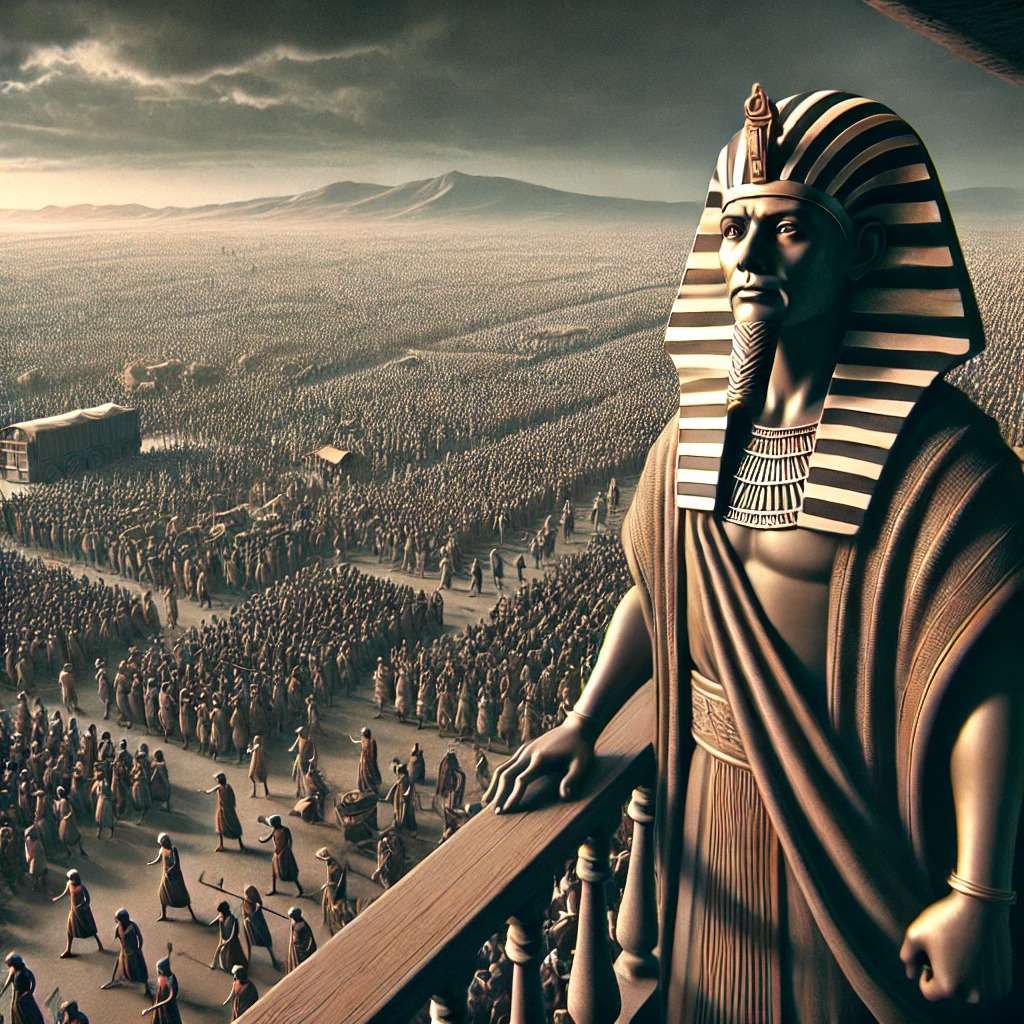
Ever wondered about the significance behind “Exodus 1:9″? This intriguing verse from the Bible holds a wealth of meaning and historical context that can deepen your understanding of ancient narratives. Whether you’re a seasoned scholar or just curious, exploring this passage offers valuable insights.
You’ll uncover the tensions and dynamics at play during a pivotal moment in biblical history. By diving into “exodus 1 9”, you connect with themes of power, fear, and resilience that continue to resonate today. Ready to explore? Let’s unravel what makes this verse so compelling.
Overview Of Exodus 1:9
Exodus 1:9 states, “And he said unto his people, Behold, the people of the children of Israel are more and mightier than we.” This verse marks a pivotal moment in the narrative. The Pharaoh expresses concern over the growing population of Israelites in Egypt. He sees their numbers as a threat to Egyptian power.
The verse reflects themes of power dynamics and fear. Pharaoh’s words reveal his anxiety about losing control over the Israelites. This fear leads to oppressive measures against them later in the chapter.
Pharaoh’s statement underscores resilience among the Israelites. Despite their hardships, they continue to grow stronger. Their increasing numbers symbolize hope and endurance amid adversity.
Understanding Exodus 1:9 involves examining its historical context. During this period, Egyptians enslaved the Israelites, subjecting them to harsh labor conditions. The verse provides insight into why Pharaoh felt threatened by their population growth.
Examining key elements like power struggles helps you grasp deeper meanings within biblical texts like Exodus 1:9. These themes remain relevant today as they echo ongoing societal issues around fear and control.
Plot And Themes
Exodus 1:9 presents a pivotal moment in the Biblical narrative, highlighting Pharaoh’s fear of the Israelites’ growing numbers and subsequent actions.
Main Plot Points
Pharaoh Observes Population Growth – The verse details Pharaoh noticing the rapid increase in the Israelite population in Egypt. This observation sparks his concern over potential threats to Egyptian authority.
Initiation of Oppression – Following his realization, Pharaoh decides to implement oppressive measures against the Israelites. These actions include harsh labor and decrees aimed at reducing their strength and numbers.
Israelites’ Resilience – Despite the oppression, the Israelites continue to grow stronger. Their resilience serves as a testament to their enduring spirit and faith amid adversity.
Key Themes
Fear and Control – The central theme revolves around Pharaoh’s fear of losing control due to the Israelites’ growth. This fear drives him to take drastic measures to maintain power.
Oppression and Resistance – Another prominent theme highlights how oppressive regimes often react when they perceive a threat. The Israelites’ resistance showcases their determination against such forces.
Hope and Endurance – The resilience of the Israelites embodies hope and endurance. Their ability to thrive despite hardships symbolizes a universal message of perseverance.
Characters Analysis
Exodus 1:9 introduces key characters whose actions shape the narrative’s themes of power, fear, and resilience.
Protagonists
The Israelites are central to this passage. They represent resilience and perseverance amidst growing oppression. Despite facing harsh labor and decrees intended to reduce their numbers, they continue to multiply and thrive. This enduring spirit symbolizes hope in times of adversity.
Antagonists
Pharaoh is the primary antagonist in Exodus 1:9. He embodies fear and control as he perceives the growing Israelite population as a threat to his reign. His response includes instituting oppressive measures aimed at subjugating the Israelites through forced labor and cruel decrees. Pharaoh’s actions highlight themes of power misuse and systemic oppression.
By understanding these characters’ roles, you can better grasp how their interactions propel the narrative forward while emphasizing timeless themes relevant to societal issues today.
Visual And Sound Design
The visual and sound design of “Exodus 1:9” plays a pivotal role in conveying its themes and emotions. High-quality animation, paired with a compelling soundtrack, enhances the overall experience.
Animation Quality
Animation quality impacts how deeply you engage with the story. In “Exodus 1:9,” detailed character designs and fluid movements bring the narrative to life. Realistic environments, like ancient Egyptian settings, add authenticity. Lighting effects highlight emotional moments, enhancing viewer immersion.
Soundtrack And Effects
The soundtrack and effects elevate the narrative’s emotional depth. A powerful orchestral score underscores key scenes, reflecting tension or hope as needed. Ambient sounds, such as marketplace chatter or labor noises, create an immersive atmosphere. Strategic use of silence builds anticipation during pivotal moments.
Audience Reception
Analyzing the reception of “Exodus 1:9” reveals diverse perspectives. This section examines critical reviews and viewer feedback to understand its impact.
Critical Reviews
Critics have praised “Exodus 1:9” for its intense narrative and compelling character portrayals. They highlight how effectively it captures themes of power, fear, and resilience. Many reviews commend the high-quality animation and sound design, noting that these elements significantly enhance the storytelling experience. Critics appreciate the attention to historical detail in character designs and environments, which adds authenticity to the portrayal of ancient Egypt.
Viewer Feedback
Viewers express strong emotional connections with “Exodus 1:9.” Audiences often mention being moved by the depiction of Israelite struggles and their enduring spirit. The relatable themes resonate with many people facing contemporary societal challenges. Positive feedback frequently cites the immersive atmosphere created through orchestral scores and ambient sounds. Viewers also praise fluid animations for bringing characters’ emotions vividly to life, deepening engagement with the story’s dramatic moments.
Conclusion:
Exodus 1:9
Exodus 1:9 offers a profound narrative that resonates both historically and emotionally. It illustrates the power of resilience against oppression and highlights universal themes still relevant today. Through powerful character portrayals and meticulous design elements, the story captivates audiences, evoking strong emotional responses.
Your understanding of this verse deepens as you explore its layers, from Pharaoh’s fear to the Israelites’ unwavering spirit. Whether you’re drawn to the historical context or moved by the animation and sound design, Exodus 1:9 remains a compelling tale of endurance and hope.
Reflect on these themes in your own life, drawing inspiration from the Israelites’ strength in adversity. The lessons embedded within Exodus 1:9 continue to inspire resilience and courage, reminding you that even in challenging times, hope prevails.
Frequently Asked Questions:
Exodus 1:9
What is the significance of Exodus 1:9 in the Bible?
Exodus 1:9 highlights Pharaoh’s fear of the increasing Israelite population, which leads to oppressive measures against them. This verse symbolizes themes of power, fear, and resilience.
How does Exodus 1:9 relate to contemporary societal issues?
The misuse of power and systemic oppression depicted in Exodus 1:9 are relevant to modern social justice issues, highlighting ongoing struggles against inequality and injustice.
What themes are explored in Exodus 1:9?
Key themes include power dynamics, fear, resilience, hope, and endurance. These themes are illustrated through the characters’ interactions and experiences.
How are Israelites portrayed in this narrative?
The Israelites symbolize resilience and perseverance despite facing harsh labor and decrees from Pharaoh. They embody the spirit of enduring adversity with hope.
Who is the antagonist in Exodus 1:9?
Pharaoh serves as the antagonist in this narrative. He embodies fear and control through his oppressive actions towards the Israelites.
What role do visual and sound design play in “Exodus 1:9”?
High-quality animation, detailed character designs, and a compelling soundtrack enhance emotional conveyance and thematic depth within “Exodus 1:9.”
How have critics responded to “Exodus 1:9”?
Critics praise its intense narrative, compelling character portrayals, historical accuracy, orchestral scores, fluid animations, and immersive atmosphere.
Why do viewers find “Exodus 1:9” relatable?
Viewers connect emotionally with themes of struggle against oppression depicted through powerful visuals and music that evoke empathy for Israelite hardships.

